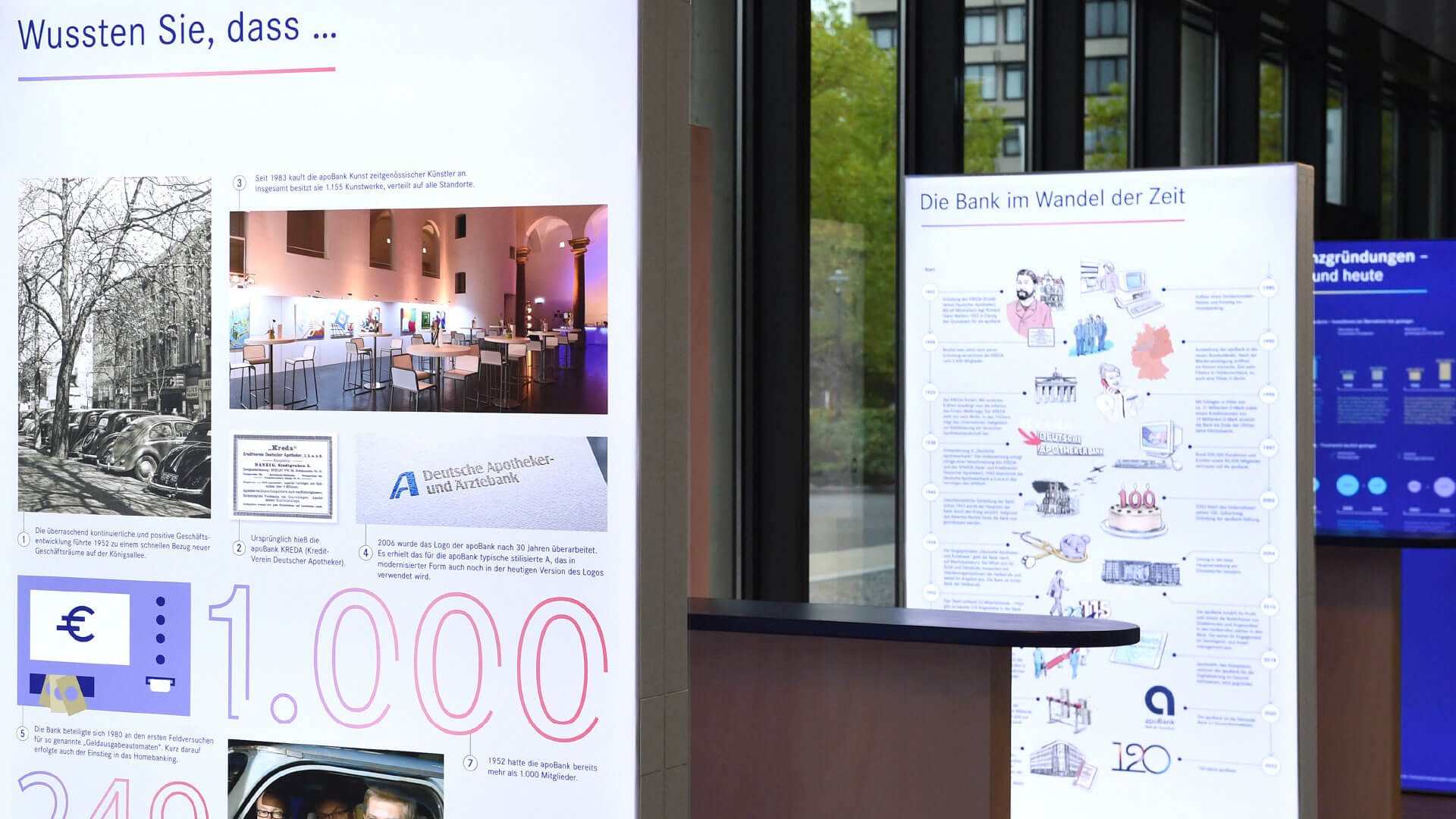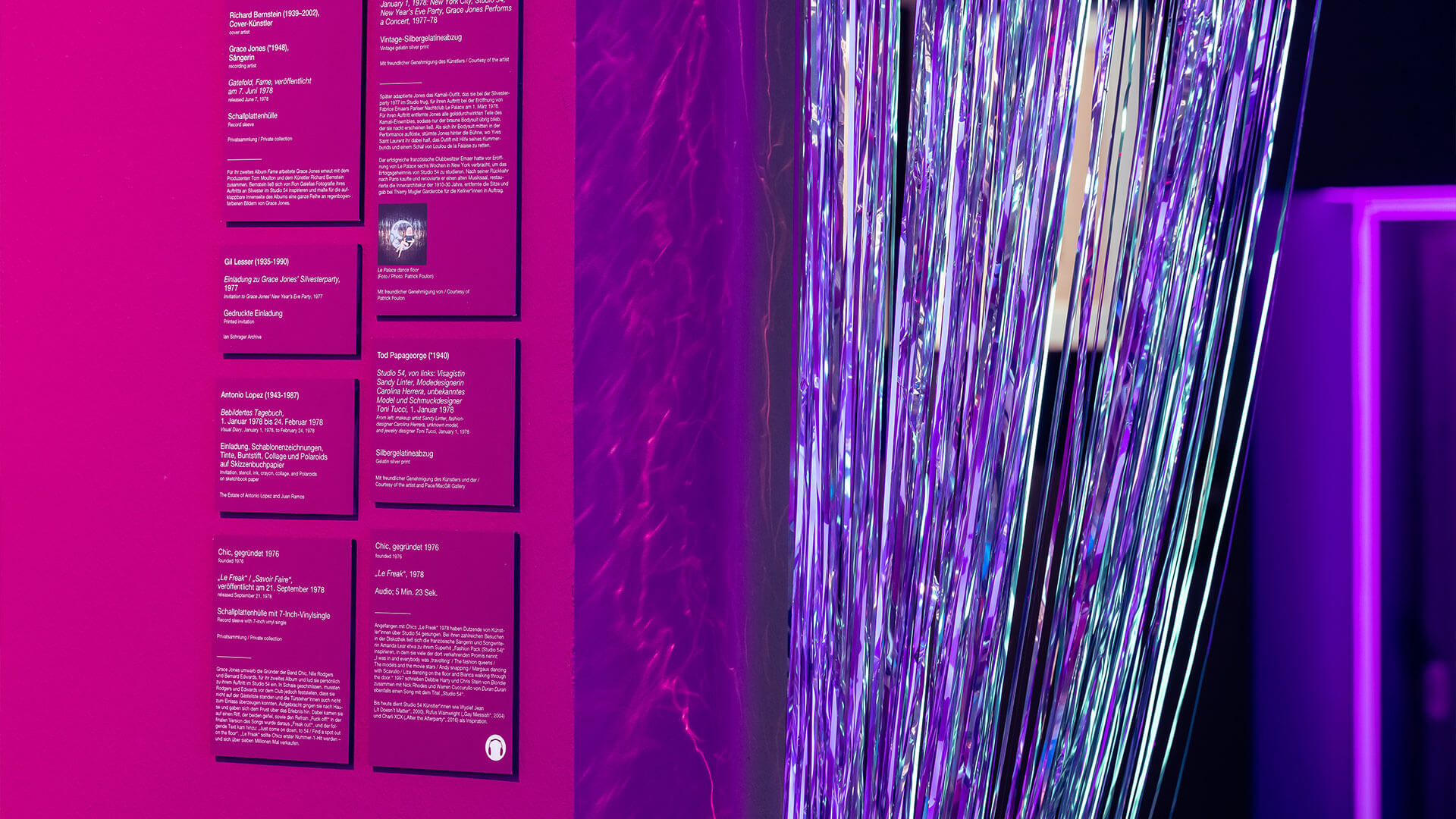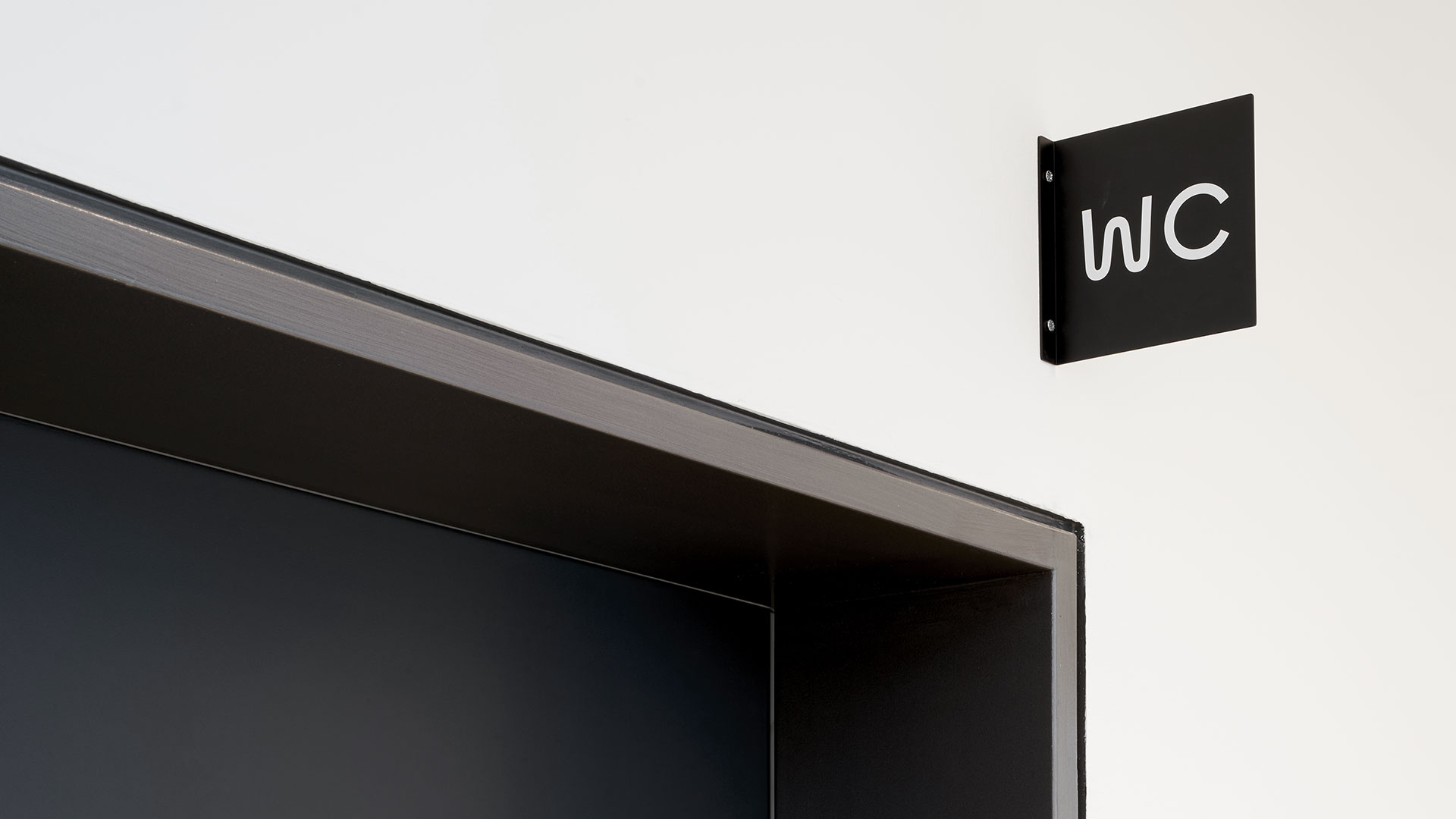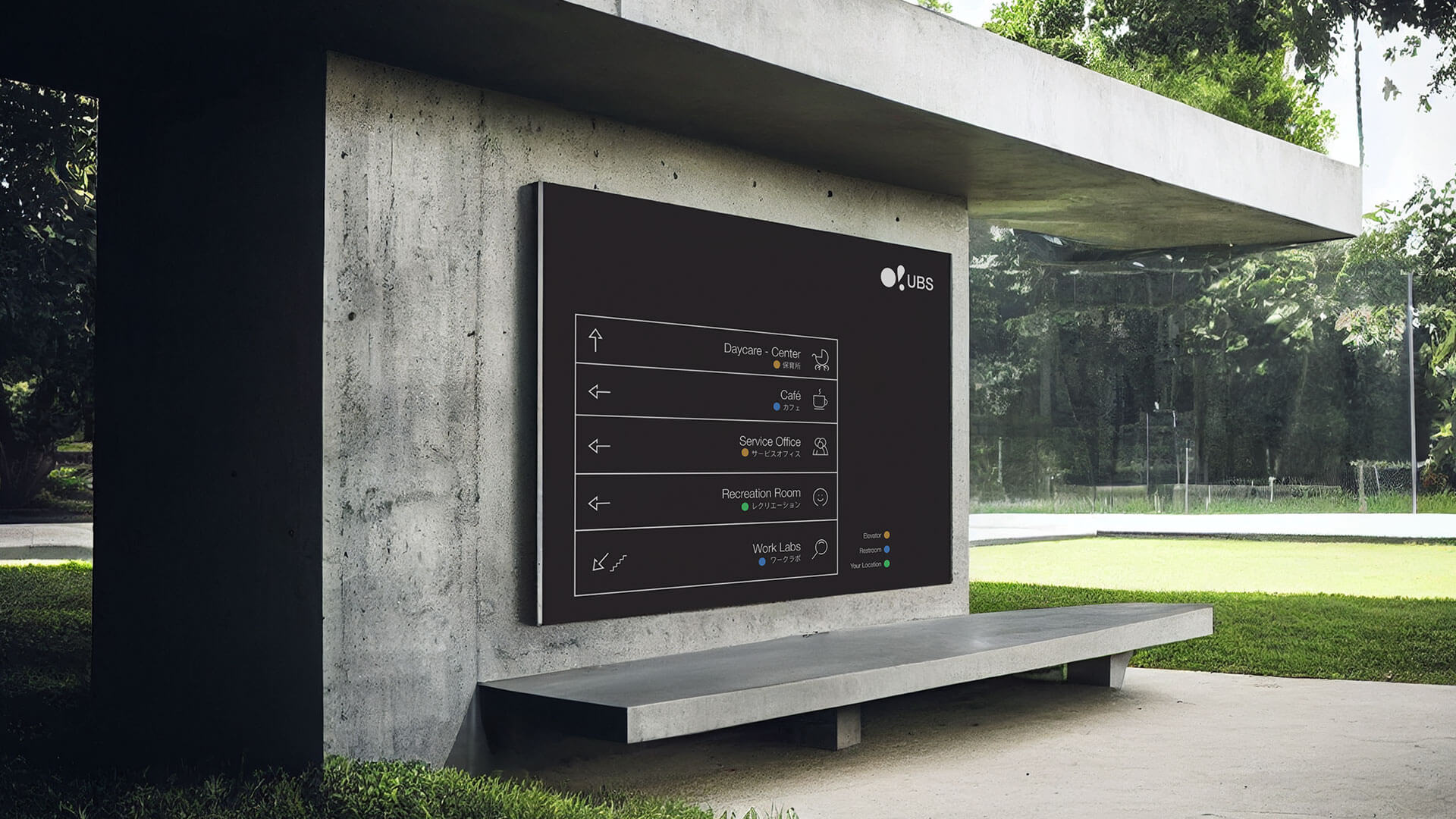Exhibitions – Find your inspiration
Exhibitions – Find your inspiration
Exhibitions – Find your inspiration
Exhibitions – Find your inspiration
Exhibitions – Find your inspiration






Guidance and orientation requires all senses. Not only the eyes.
Sounds, floor coverings and textures play an important role in orientation in exhibitions. Especially for people with visual impairments or blindness, these factors can be crucial for moving safely and independently through space.

Our main approach for signage and wayfinding in exhibitions.
→ Signalling through signs, colours, shapes, textures, and sounds that are perceived consciously and unconsciously.
→ Differentiate between what is essential and what is not. Communicate as little as possible and as much as necessary.
→ Provide order, assistance, and reliability. Prevent discomfort in a foreign environment through orientation.
→ Interpret the identity of the exhibition through aesthetic elements.
→ Respect the art and support them as much as you can.
→ Be able to communicate with different visitor groups (age, language, milieu, accessibility, etc.).
→ Welcome visitors at distant touchpoints and inviting and activating them to come back when they leave the house.
More projects

ArchitectureArchitecture

Public SpacesPublic Spaces